- Not a substitute for professional veterinary help.
From the regal Afghan Hound to the athletic Weimaraner, some of the most striking dog breeds also have a reputation for being stubborn. Whether you call them strong-willed, independent, or even headstrong, these dogs stand in stark contrast to the biddable breeds that are unfailingly eager to please.
But stubbornness isn’t necessarily a bad thing. Working breeds, such as sighthounds, scenthounds, and vermin-hunting terriers, were developed to rely on their own internal motivation. These dogs aren’t necessarily hard to train; it’s just a matter of finding the right reward that convinces them that compliance is worth it.
It’s your job as a pet parent to find out what motivates your individual dog and to personalize your training around it. The stubborn dog breeds on our list might make that task a little more challenging, but their intelligence, loyalty, and charm make it well worth the effort.
1. Afghan Hound
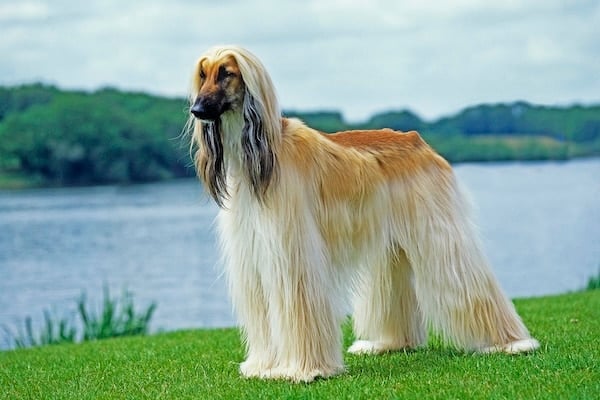
slowmotiongli via iStock
The Afghan Hound’s glamorous appearance belies a long history of hunting prowess. Developed to spot prey from a distance and chase both small and large game over harsh terrain, this long-haired breed is known for its speed and agility. Originally bred to hunt independently, Afghan Hounds retain their reputation as free-thinkers, prone to distraction by anything that resembles prey. Underneath their athleticism and boundless energy, however, lies a loyal and loving disposition.
Breed Overview:
- Coat type: Long and silky
- Height: 25-27 inches
- Weight: 50-60 pounds
- Colors: Black, tan, silver, blue, cream, red, white
- Trainability: Challenging
- Best for: Active singles and families with older children
2. Akita
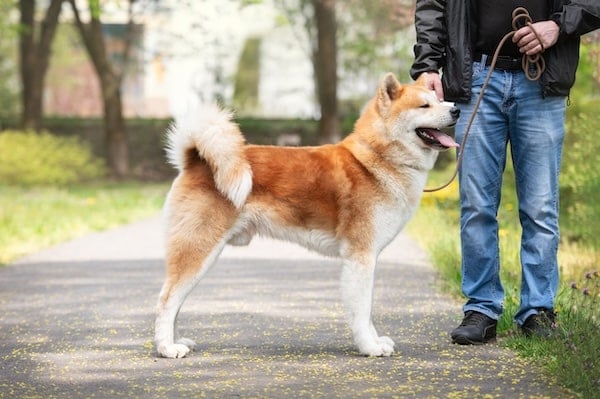
Kristina Chizmar via iStock
Where the Afghan Hound is lean and lithe, the Akita is muscular and sturdily built. Famous for their loyalty and courage, Akitas were developed for guarding nobility and hunting large prey (like bears). Their sheer size may pose a challenge for some pet parents. Additionally, the protective instincts that make them effective as guard dogs are best managed with early socialization and consistent training.
Breed Overview:
- Coat type: Medium-length, double-coated
- Height: 26-28 inches (male), 24-26 inches (female)
- Weight: 100-130 pounds (male), 70-100 pounds (female)
- Colors: Black, fawn, red, white, brown, silver, brindle
- Trainability: Moderately trainable
- Best for: Experienced dog guardians, single pet parents, families with older children
3. Basenji

s5iztok via iStock
A talented hunting breed of African origin, the Basenji exhibits a combination of feline grace and canine athleticism. These dogs are known for their keen intelligence, curled tails, and unusual yodel-like vocalizations. Bred to hunt small prey and flush larger game into the waiting nets of hunters, Basenjis are quick-thinking problem solvers. Making training sessions active and engaging is crucial for this potentially stubborn dog breed.
Breed Overview:
- Coat type: Short and smooth
- Height: 16-17 inches
- Weight: 22-24 pounds
- Colors: Combinations of black, white, tan, red, blue, cream, and brindle
- Trainability: Moderately challenging
- Best for: Active singles and families with older children, dog-only households
4. Beagle
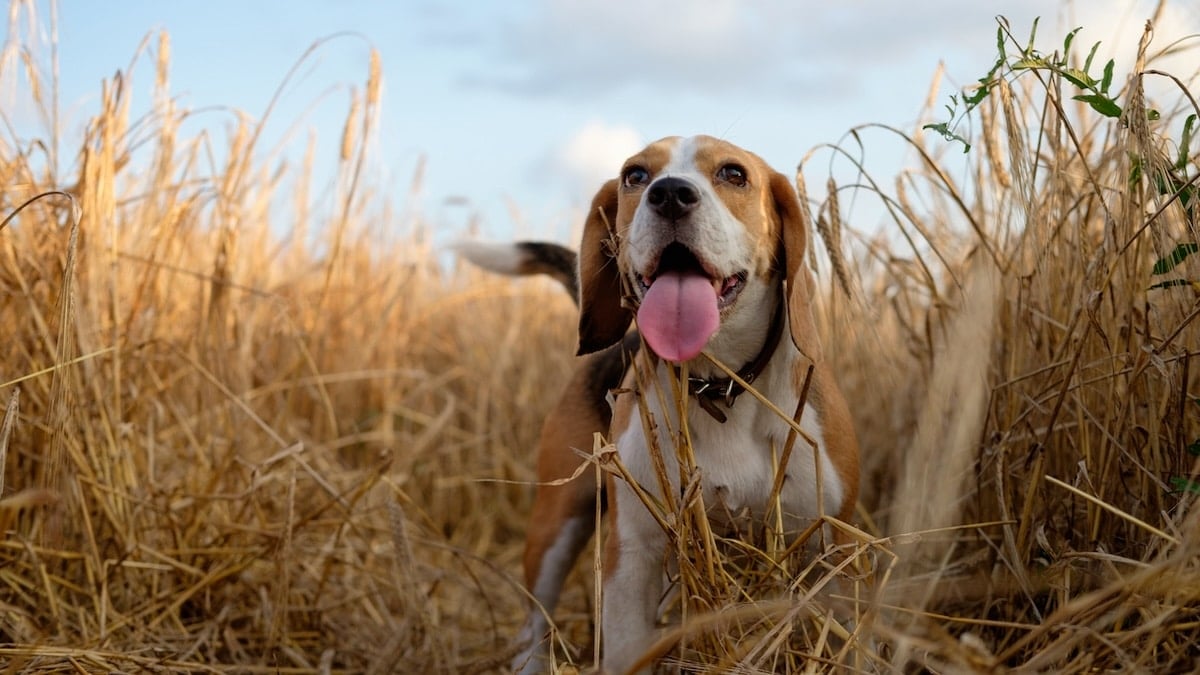
androsov58 via iStock
Bred to hunt rabbits and hares, Beagles are renowned for their superb sense of smell and strong tracking instincts, which pair with a compact but athletic build. Beagles often respond well to training, but they can be easily distracted when they catch a particularly enticing scent. They’ll let you know about it too, with their mournfully loud Beagle bays. While sweet, silly, and generally good with kids, the Beagle may not be suitable for households with cats and small pets due to their high prey drive.
Breed Overview:
- Coat type: Short and smooth
- Height: 13-15 inches
- Weight: 20-30 pounds
- Trainability: Moderately trainable
- Colors: Typically black, red, and white
- Best for: Active singles and families, multi-dog households
5. Chihuahua
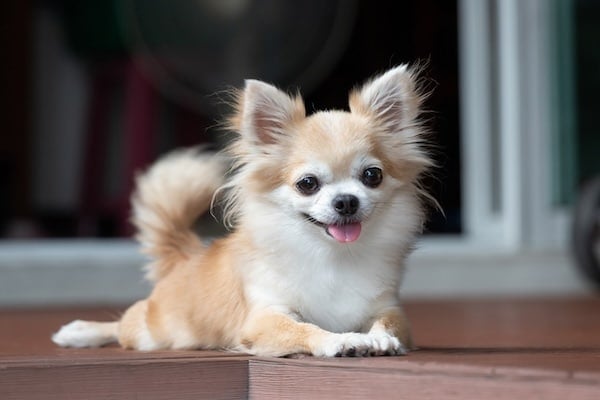
Ratchat via iStock
Small as they are, Chihuahuas are notorious for their big personalities. As a toy breed of Mexican origin, these pups were developed primarily for companionship. As such, they can be very affectionate and loving with family. However, Chihuahuas are prone to developing overly assertive behaviors as a stress response to inadequate care or a lack of understanding of small dog needs. Chis are also highly intelligent and quick to draw connections, so you’ll want to prevent and redirect unwanted behaviors right from the start.
Breed Overview:
- Coat type: Short or medium-length and smooth
- Height: 5-8 inches
- Weight: Up to 6 pounds
- Colors: Widely varied
- Trainability: Moderately trainable
- Best for: Single pet parents, urban dwellers, families with older children
6. Chinese Shar-Pei
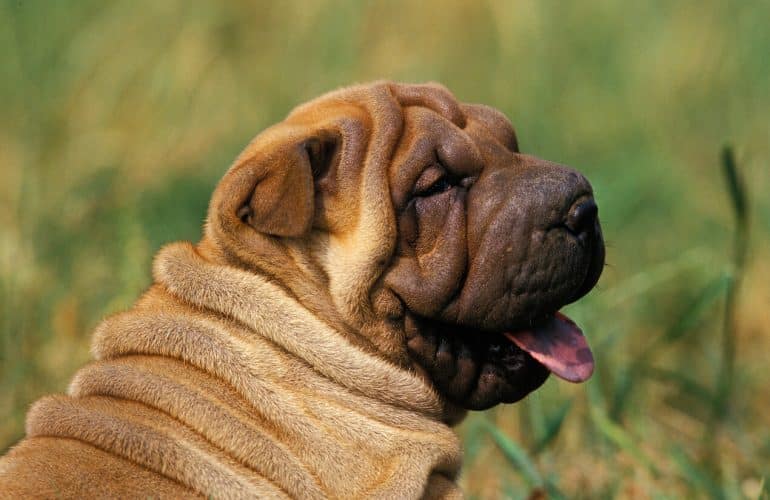
iStock/slowmotiongli
Chinese Shar-Peis are easily identifiable by their distinctive, clamshell-shaped ears and adorable, wrinkled skin. Originally bred to guard property, these dogs are fiercely loyal to their families. They’re smart, but sometimes too smart, figuring out ways to do things you’d prefer they not do. Their guarding genetics can also make them wary of strangers and unfamiliar dogs, which could lead to reactivity or aggression if early socialization isn’t prioritized.
Breed Overview:
- Coat type: Short and smooth
- Height: 18-20 inches
- Weight: 45-60 pounds
- Colors: Apricot, black, lilac, cream, brown, red, fawn
- Trainability: Moderately trainable
- Best for: Experienced dog guardians, families with older children
7. Chow Chow

iStock/Sue Thatcher
Another breed originally from China, the Chow Chow is a sturdily built, deep-chested dog known for its black tongue, magnificent mane, and squishy face. As one of the oldest breeds still in existence today, their origins date back over 2,000 years to the Han Dynasty. Throughout history, this versatile breed has had a variety of jobs, including herding, hunting, sledding, and guarding. Known to be meticulously clean dogs, Chow Chows are easy to potty train. But because of their days of independently guarding possessions, temples, and livestock, they can be aloof and strong-willed.
Breed Overview:
- Coat type: Medium-length, double, smooth, or rough
- Height: 17-20 inches
- Weight: 45-70 pounds
- Colors: Blue, red, cinnamon, cream, black
- Trainability: Moderately trainable
- Best for: Experienced dog guardians, families with older children
8. Corgi

YURY NIKALAYEU via iStock
In contrast to the Chow Chow and Shar-Pei, training challenges for the Corgi stem not from protective instincts but from herding genes. Corgis were bred to fearlessly manage flocks with minimal human intervention, so they pack a lot of energy and personality into a small body. For active pet parents willing to devote ample time to exercise and training, the Corgi makes a friendly and affectionate companion.
Breed Overview:
- Coat type: Short and double-coated
- Height: 10-12 inches
- Weight: Up to 30 pounds (male), up to 28 pounds (female)
- Colors: Black & tan, fawn, red, or sable
- Trainability: Very trainable
- Best for: Active singles and families
9. Dachshund

iStock/NORRIE3699
Short and stout, the Dachshund might not strike you as a hunting dog, but their long bodies make them perfect for flushing out burrowing prey. Dachshunds are tenacious little dogs, bred specifically for hunting badgers, so they’re the kind of pup that won’t back down from a fight. With proper training and adequate exercise to curb their prey drives, Dachshunds make excellent companions. They’re particularly suitable for smaller homes and do well with older children and other dogs.
Breed Overview:
- Coat type: Smooth and short to medium-length
- Height: 8-9 inches (standard), 5-6 inches (miniature)
- Weight: 16-32 pounds (standard), up to 11 pounds (miniature)
- Colors: Black & tan, chocolate & tan, cream, wheaten, red, black
- Trainability: Very trainable
- Best for: Active singles, families with older children, urban dwellers
10. English Bulldog
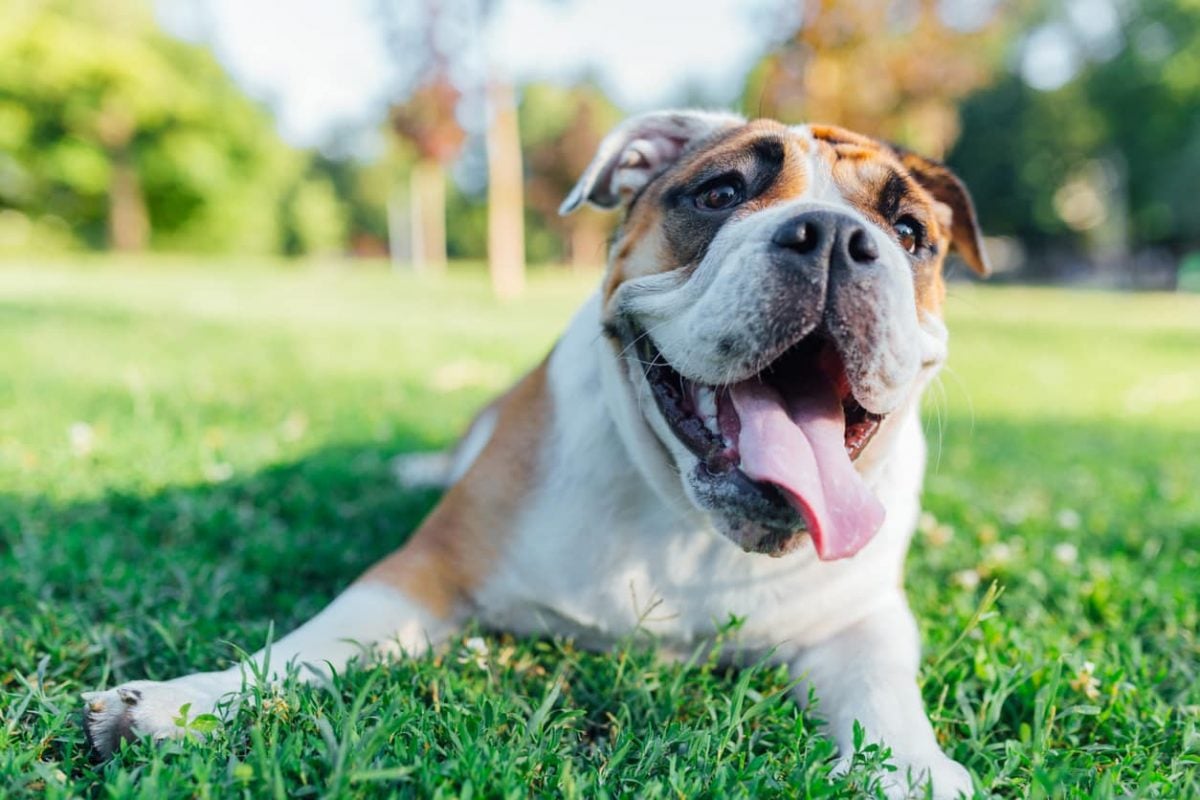
Ivan Pantic via iStock
Though they’ve earned a reputation as one of the most stubborn dog breeds, English Bulldogs are very trainable. The trick is finding a reward tempting enough to overcome their independent natures. Developed from the Old English Bulldog, a breed once used for bull-baiting, the modern English Bulldog retains a sturdy build and brutish strength. However, there’s nothing aggressive about this docile and loyal companion breed.
Breed Overview:
- Coat type: Short and smooth
- Height: 14-15 inches
- Weight: Up to 50 pounds (male), up to 40 pounds (female)
- Colors: Brindle, white, fawn, red, black, gray
- Trainability: Very trainable
- Best for: Single pet parents, families with older children
11. Jack Russell Terrier
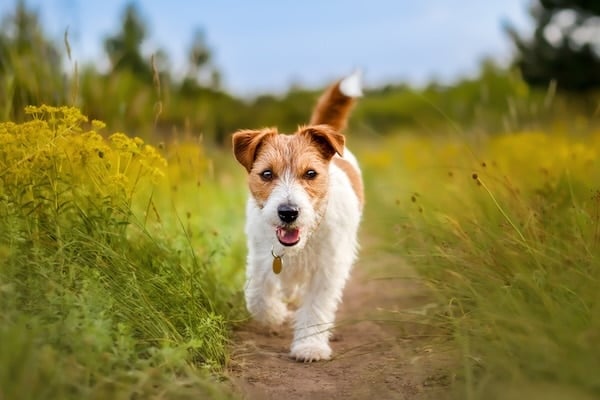
Wavetop via iStock
The Jack Russell Terrier is a feisty breed of British working terrier developed for fox hunting. These little dogs are incredibly smart and friendly, but their high prey drives and seemingly endless stores of energy can be a challenge for unsuspecting pet parents to manage. Jack Russells are also very confident in nature, so they’re best suited to an experienced dog guardian or someone willing to maintain a consistent training regimen.
Breed Overview:
- Coat type: Short and smooth or wiry
- Height: 10-12 inches
- Weight: 9-15 pounds
- Colors: White, often with black and/or tan markings
- Trainability: Moderately trainable
- Best for: Experienced dog guardians, active singles, and families
12. Rottweiler
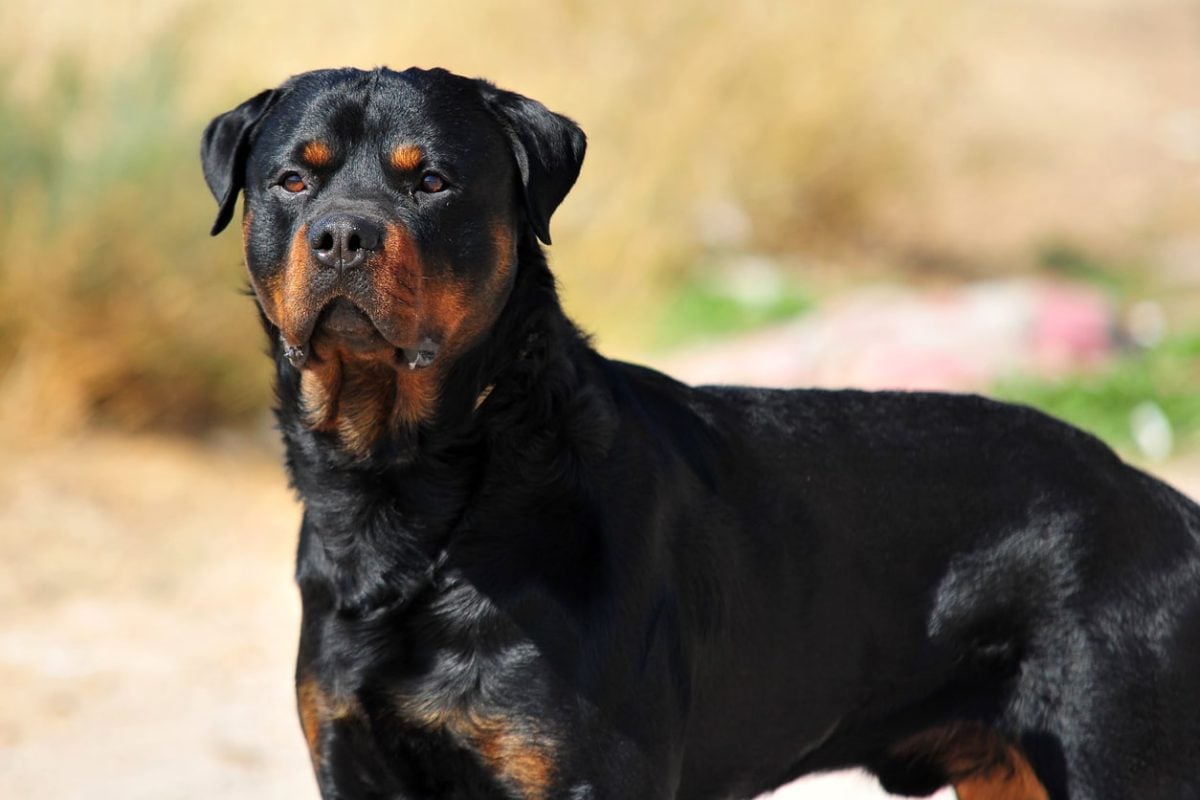
Stock/alberto clemares expósito
Known for their muscular builds and fearless temperaments, Rottweilers make an imposing impression, but they’re exceedingly gentle at heart. Developed as an all-purpose working breed, the Rottweiler has been used for herding, guarding, and even hauling carts. If you’re looking for an effective watchdog that doubles as an affectionate family companion, look no further. Just prepare yourself to devote time to early socialization and consistent training to manage this big black breed’s size and self-assuredness.
Breed Overview:
- Coat type: Short and smooth
- Height: 24-27 inches (male), 22-25 inches (female)
- Weight: 95-135 pounds (male), 80-100 pounds (female)
- Colors: Black only with rust, mahogany, or tan markings
- Trainability: Highly trainable
- Best for: Experienced dog guardians, families with older children
13. Shiba Inu

Thirawatana Phaisalratana via iStock
Similar in appearance to the Akita (albeit much smaller), the Shiba Inu is a popular Japanese breed that was developed for hunting in the mountains. In fact, the Shiba’s name translates to “brushwood dog,” referencing their ability to flush game. This breed’s reputation for stubbornness stems from their ability to confidently and independently do things on their own. Shibas are very smart, but it can be tough to get these dogs to do something they don’t already want to do.
Breed Overview:
- Coat type: Short and double-coated
- Height: 13.5-16.5 inches
- Weight: 17-23 pounds
- Colors: Black & tan, cream, red, sesame
- Trainability: Moderately challenging
- Best for: Experienced dog guardians, families with older children
14. Siberian Husky

Petko Ninov via iStock
Like the Shiba Inu, the Siberian Husky has a distinctly wild appearance, characterized by a wolf-like face and a double coat. Bred to pull sleds, Huskies are athletic and able to withstand harsh conditions thanks to their thick fur. They’re less independent than many breeds on this list, but they can be challenging for pet parents who aren’t prepared to meet their high needs for exercise and mental stimulation. A bored Husky can become destructive in their search for entertainment.
Breed Overview:
- Coat type: Medium length, double-coated
- Height: 21-23.5 inches (male), 20-22 inches (female)
- Weight: 45-60 pounds (male), 35-50 pounds (female)
- Colors: All white or white with agouti, black, gray, red, sable, or brown markings
- Trainability: Moderately trainable
- Best for: Active singles and families
15. Weimaraner

iStock/Bigandt_Photography
Easily distinguishable by their sleek grey coats, Weimaraners are German gun dogs bred for speed and stamina. This breed is friendly by nature and excellent with children, though it’s crucial to consider their size when around younger children. The Weimaraner is an intelligent breed and highly trainable, but their energy can be challenging to manage. Early and ongoing training is best for this breed to prevent restlessness.
Breed Overview:
- Coat type: Short and smooth
- Height: 25-27 inches (male), 23-25 inches (female)
- Weight: 70-90 pounds (male), 55-75 pounds (female)
- Colors: Blue, gray, silver gray
- Best for: Active singles and families
- Trainability: Highly trainable
Training Tips for Stubborn Dogs
“When people call a dog stubborn, they’re often interpreting the dog’s behavior through a human lens of defiance or obstinacy,” says Alexandra Bassett, a certified professional dog trainer and behavioral consultant at Dog Savvy.
Stubborn breeds are often considered the hardest dogs to train, but Bassett insists this isn’t the case. “A dog labeled as stubborn is often just under-motivated, over-stimulated, or unengaged,” she notes. Positive reinforcement training is still highly effective; it’s just a matter of discovering what reward your dog finds valuable enough to motivate them to do what you’d prefer.
Here are some training tips Bassett has found effective for even the most stubborn dog breeds:
- Find out what your dog thinks is a good reward. Try traditional training rewards first. Test out a variety of treats and toys to see if your pup responds positively to any of them. Get creative and closely observe what your dog finds reinforcing, even if it seems obscure to you!
- Be smart when scheduling training sessions. Time your training sessions to minimize distractions and maximize engagement. Your dog may be more willing to engage if they’ve already worked off their excess energy or if they’re not already full from their most recent meal.
- Turn training into a game. Make training fun for your dog by incorporating reinforcement through pattern games, social play, and traditional games like fetch and tug.
- Work with your dog’s instincts, not against them. Dogs with high prey drives or strong tracking instincts may respond well to training techniques that enable them to use their skills. For instance, reward your dog for engaging with you and then release them to get a big sniff.
In the end, you can’t completely change your dog’s nature—nor should you try. It’s part of what makes them the breed we know and love!



